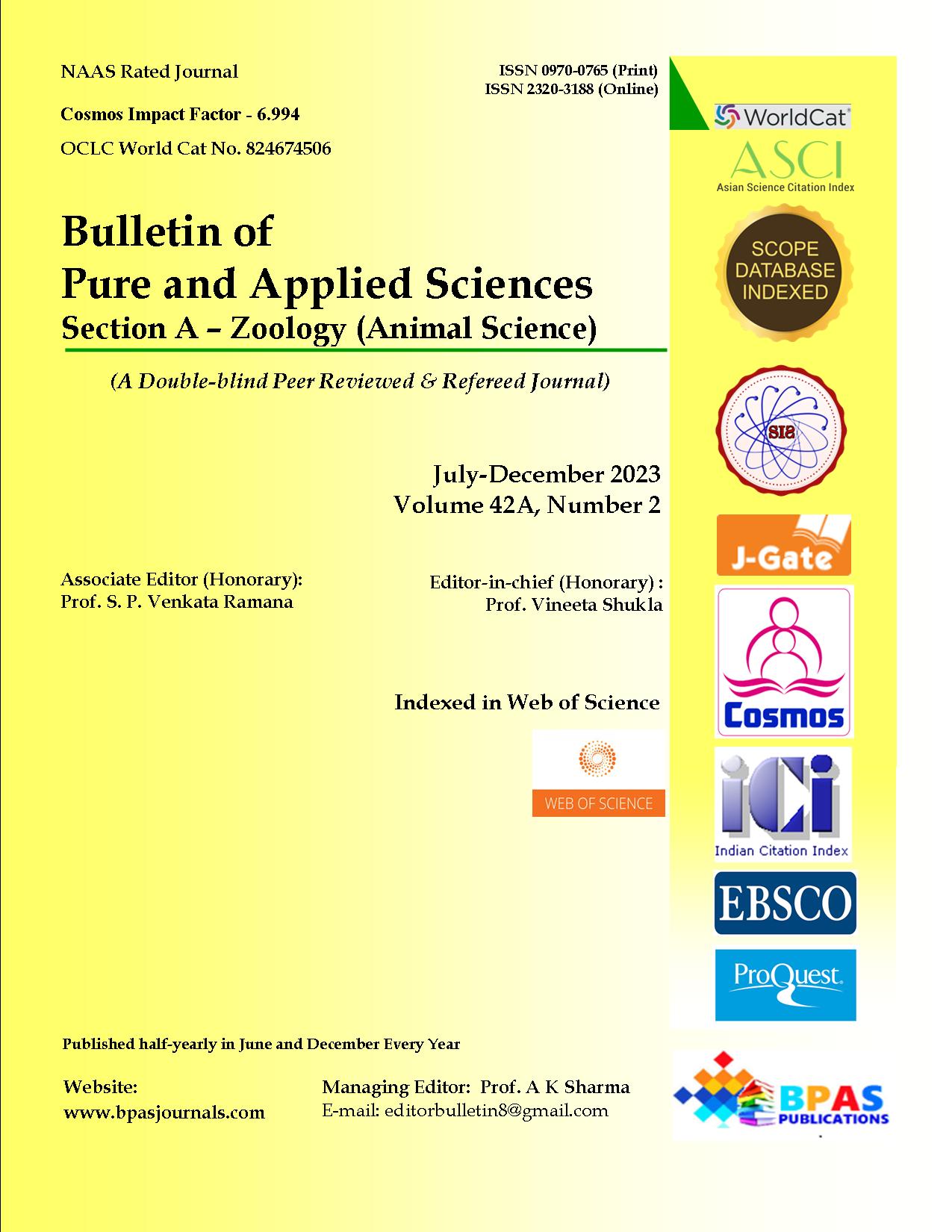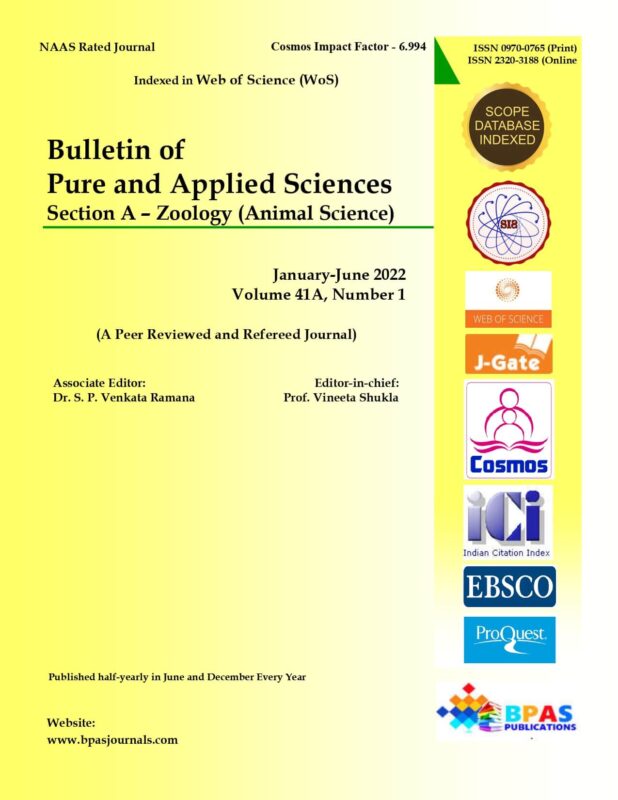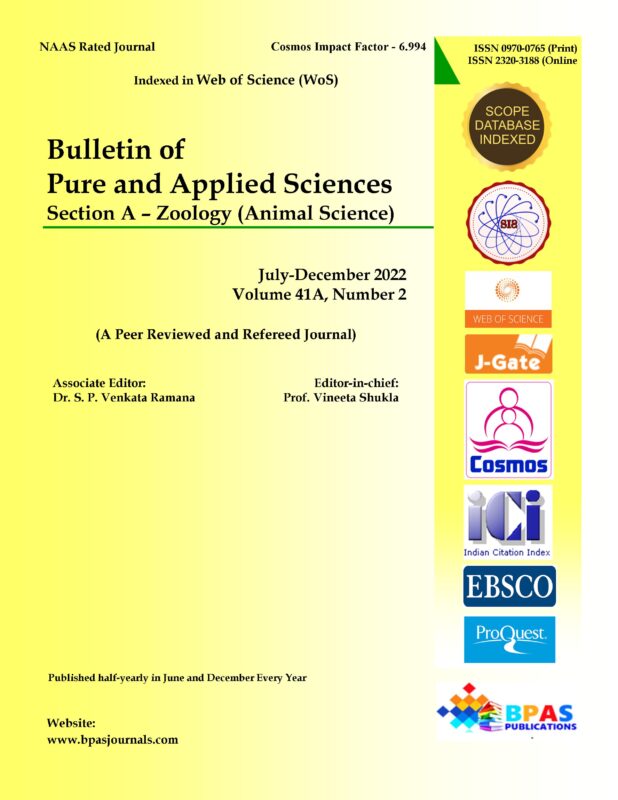Xenobiotic Bioconcentration in Terrestrial Oligochaetes to Evaluate Soil Quality
9.38$
1Aja M.*, 2Jaya M., 3Prasanth C.B., 4Santhosh P.P., 5Brinesh R. and 6Raji R.
Bulletin of Pure and Applied Sciences
Zoology (Animal Science), Vol.42A, No.2,
July-December 2023: P.214-223
Description
1Aja M.*, 2Jaya M., 3Prasanth C.B., 4Santhosh P.P., 5Brinesh R. and 6Raji R.
| Author’s Affiliation:
1Guest lecturer, Department of Zoology, Sree Krishna College, Guruvayur, Kerala 680602, India E-mail: ajamanazhy@gmail.com 2Department of Zoology, Sree Kerala Varma College, Thrissur, Kerala, India E-mail: jayamanazhy@yahoo.co.in 3Department of Statistics, Sree Kerala Varma College, Thrissur, Kerala, India E-mail: prasanthwarriercb@keralavarma.ac.in 4Department of Zoology, Sree Krishna College, Guruvayur, Kerala 680602, India E-mail: santhuptb@gmail.com 5Department of Zoology, Sree Krishna College, Guruvayur, Kerala 680602, India E-mail: brineshr@gmail.com 6Department of Zoology, Sree Krishna College, Guruvayur, Kerala 680602, India E-mail: rajikrishnendu@gmail.com
|
| *Corresponding author:
Aja M Guest lecturer, Department of Zoology, Sree Krishna College, Guruvayur, Kerala 680602, India E-mail: ajamanazhy@gmail.com
|
| Article Info:
Received on 23.04.2023 Revised on 05.06.2023 Approved on 02.07.2023 Accepted on 10.07.2023 Published on 20.12.2023 |



